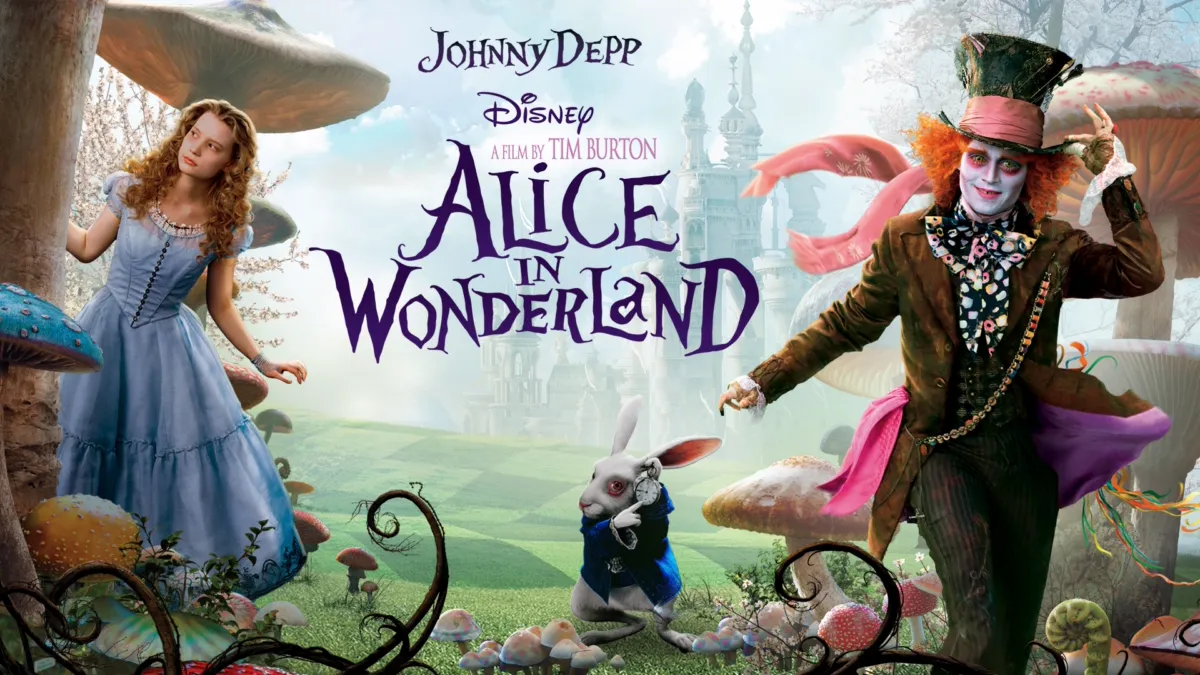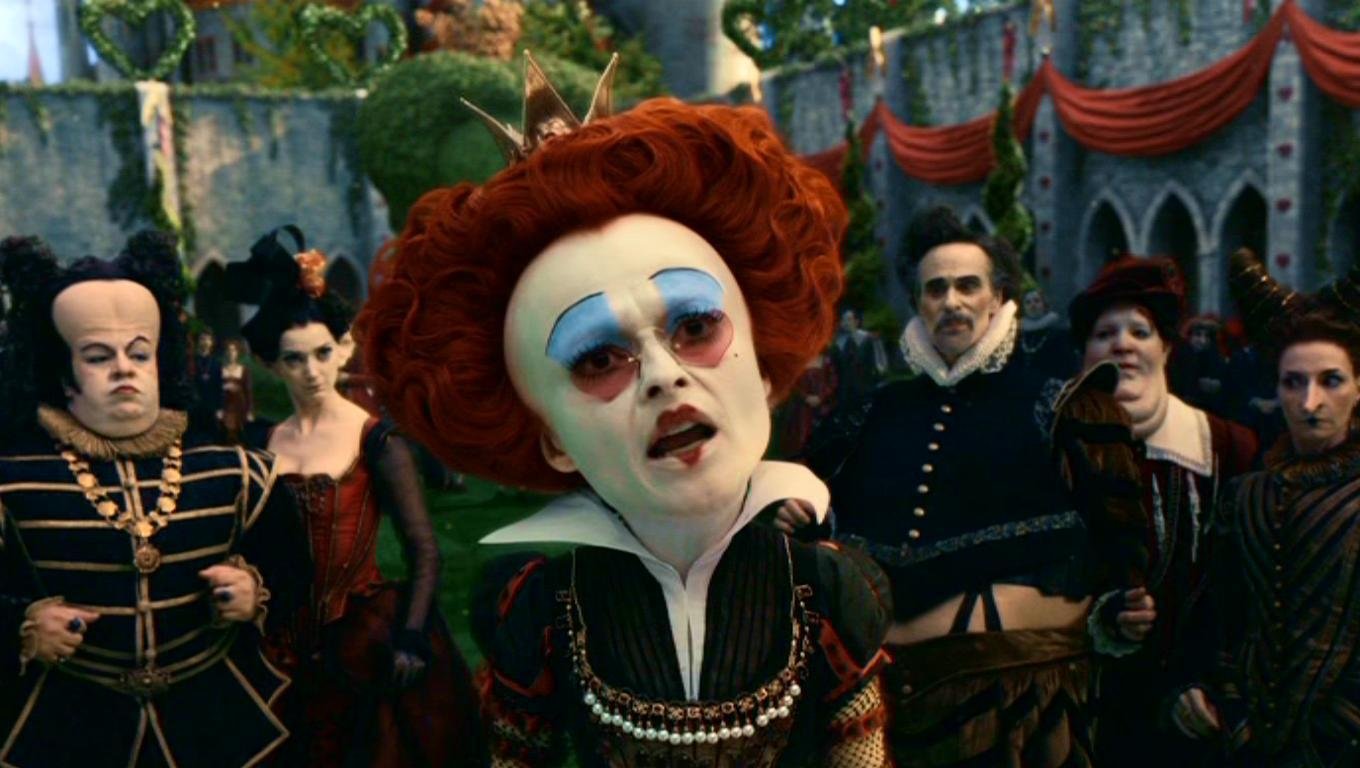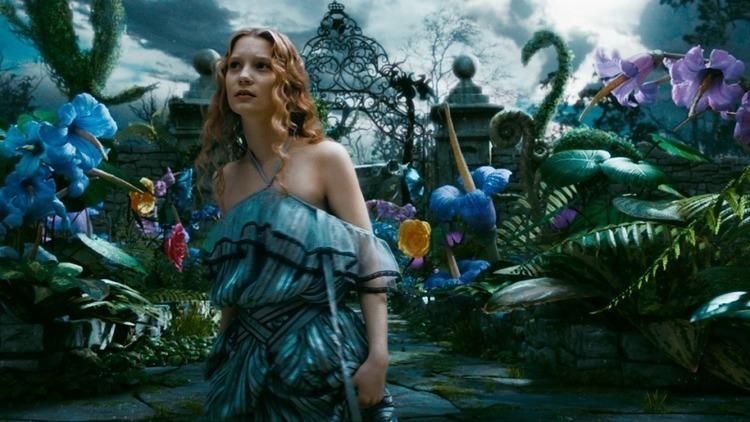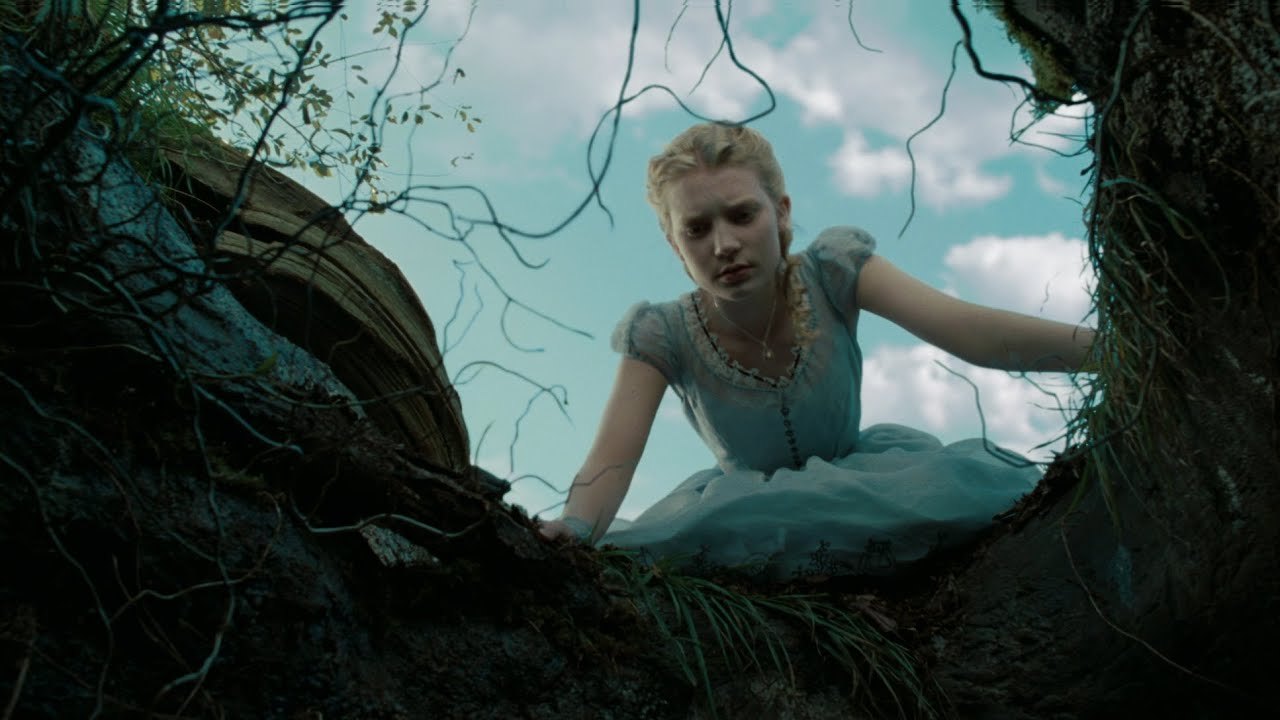Alice in Wonderland (2010)

Alice in Wonderland (2010), directed by Tim Burton, is a visually stunning and darkly imaginative adaptation of Lewis Carroll’s beloved classic. With a screenplay by Linda Woolverton, the film brings a new twist to the traditional tale of Alice, who finds herself once again falling down the rabbit hole into a fantastical world. However, this version of Wonderland is far from the whimsical, innocent place of the original story. Burton’s interpretation is darker, more twisted, and filled with eccentric characters, making it a unique cinematic experience for both fans of the original novel and newcomers alike.
In this reimagined version, Alice (played by Mia Wasikowska) is no longer a curious young girl, but a 19-year-old who has forgotten her previous adventures in Wonderland. Alice is about to be forced into an arranged marriage when she unexpectedly falls down the rabbit hole again and returns to Wonderland. Upon her arrival, she discovers that the once-vibrant world is now under the oppressive rule of the Red Queen (Helena Bonham Carter), whose oversized head is a symbol of her cruel nature. Alice, urged by a prophecy, must join forces with the inhabitants of Wonderland to overthrow the Red Queen and restore peace to the land. Along the way, she encounters many bizarre characters, including the Mad Hatter (Johnny Depp), who plays a central role in her quest.
One of the standout features of Alice in Wonderland is Tim Burton’s distinctive visual style. Burton, known for his gothic sensibilities and eccentric artistry, brings a unique dark fantasy aesthetic to the film. Wonderland is presented as a surreal landscape, filled with exaggerated features and bizarre proportions, from talking flowers to a giant mushroom forest. The Red Queen’s castle is a chaotic and grotesque structure, reflecting her volatile and tyrannical nature. Burton’s use of vibrant colors alongside dark, shadowy settings creates a striking contrast that enhances the sense of fantasy and danger in the film. The use of CGI and motion capture technology further adds to the fantastical quality of the world, making it feel both otherworldly and immersive.
At the heart of Alice in Wonderland lies a strong theme of identity and self-discovery. Alice’s journey through Wonderland is not only a physical adventure but also a metaphor for her personal growth. Initially, Alice is uncertain about who she is and what her future holds. However, as she interacts with the eccentric characters of Wonderland, she begins to realize her own strength and courage. The film explores Alice’s journey from a passive, uncertain young woman to a confident and assertive leader. Her struggle to define herself and take control of her destiny mirrors the larger themes of empowerment and personal transformation, making the film resonate with audiences on a deeper emotional level.

Tim Burton’s version of Wonderland is not a light-hearted, playful world but a much darker and more ominous place. The whimsical and absurdity of the original tale is preserved, but it is now presented within a more gothic and sometimes disturbing context. The Red Queen’s rule is harsh and oppressive, and the film includes darker elements such as the terrifying Jabberwocky dragon, which Alice must slay in order to fulfill her destiny. These darker tones add a sense of danger and urgency to Alice’s quest, making the stakes much higher. Burton’s Wonderland is a place where dreams and nightmares blur together, creating a sense of unease and excitement that keeps the audience engaged.

The cast of Alice in Wonderland brings the eclectic characters of Wonderland to life in unforgettable ways. Johnny Depp’s portrayal of the Mad Hatter is both quirky and unsettling, capturing the character’s eccentricity while hinting at a deeper, tragic backstory. Helena Bonham Carter’s performance as the Red Queen is delightfully over-the-top, with her exaggerated features and erratic behavior making her one of the most memorable antagonists in recent cinema. Mia Wasikowska’s Alice is a quiet, introspective character who gradually comes into her own as the story progresses. The film also features a range of other colorful characters, including the Cheshire Cat (voiced by Stephen Fry) and the White Rabbit (voiced by Michael Sheen), who each contribute to the film’s whimsical yet eerie atmosphere.

While Alice in Wonderland is visually striking and thematically rich, it also delivers a good amount of action and adventure. Alice’s journey through Wonderland involves battles with the Red Queen’s forces, including her climactic fight against the Jabberwocky, a massive dragon-like creature. These action sequences, though fantastical, are well-executed and add a sense of thrill to the narrative. The film’s action scenes are infused with Burton’s trademark style, mixing surrealism with intensity, making them both visually captivating and emotionally engaging. Alice’s final victory over the Red Queen and the Jabberwocky serves as a triumphant conclusion to her journey of self-discovery and personal growth.

In conclusion, Alice in Wonderland (2010) is a visually stunning and thematically rich film that successfully reinvents a beloved classic. Tim Burton’s dark and whimsical vision of Wonderland offers a fresh perspective on Alice’s adventure, combining elements of fantasy, action, and psychological growth. The film’s exploration of identity, self-discovery, and the battle between good and evil is both captivating and thought-provoking. With strong performances from the cast and a visually unique world, Alice in Wonderland is a darkly magical journey that leaves a lasting impression, inviting viewers to reflect on their own personal growth and the power of imagination.











